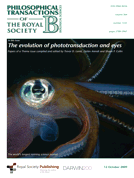The Journal of Effective teaching has a special issue on evolution education.
Journal of Effective Teaching
Volume 9, Issue 2, September 2009
Special Issue – Teaching Evolution in the Classroom
Full Issue – PDF
CONTENTS
Letter from the Editor-in-Chief:: Origins …………………………………………………………………………………………….. 1-3
Russell L. Herman …………………………………….. HTML, PDF
ARTICLES
The Influence of Religion and High School Biology Courses on Students’ Knowledge of Evolution
When They Enter College ……………………………………………………………………………………………………………. 4-12
Randy Moore, Sehoya Cotner, and Alex Bates ………………………. Abstract, HTML, PDF
Teaching Evolution in the Galápagos ……………………………………………………………………………………………. 13-28
Katherine E. Bruce, Jennifer E. Horan, Patricia H. Kelley, Mark Galizio ……………….. Abstract, HTML, PDF
A College Honors Seminar on Evolution and Intelligent Design: Successes and Challenges ……………………… 29-37
Patricia H. Kelley …………………………………………….. Abstract, HTML, PDF
Clearing the Highest Hurdle: Human-based Case Studies Broaden Students’ Knowledge
of Core Evolutionary Concepts …………………………………………………………………………………………………… 38-53
Alexander J. Werth ………………………………….. Abstract, HTML, PDF
Evolution in Action, a Case Study Based Advanced Biology Class at Spelman College ………………………….. 54-68
Aditi Pai ……………………………………………………. Abstract, HTML, PDF
Preparing Teachers to Prepare Students for Post-Secondary Science:
Observations From a Workshop About Evolution in the Classroom ………………………………………………….. 69-80
Caitlin M. Schrein, et al. …………………………… Abstract, HTML, PDF








